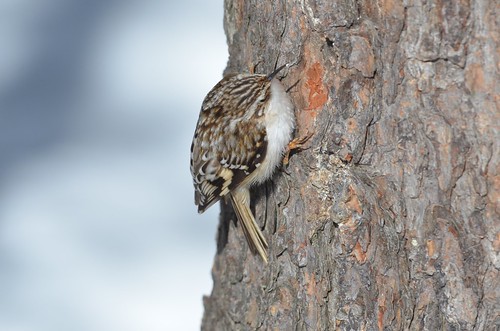The interactions of the viral sequences from patients’ PBMCs to the sequences received from the corresponding RNA viruses within the identical locations were examined for every single individual to about assess the viral variety in equally compartments (Figure 6). Incredibly, the intraindividual plasma and proviral sequence variation in four clients (10BR_PE073, 10BR_PE053, 10BR_PE104 and 10BR_PE032) in the partial pol regions depicted in Determine 5 (857290-04-1 marked with orange bins) ended up remarkably large, indicating that the plasma viruses were derived from a inhabitants significantly distinctive from those of the cellular sources a outcome steady with twin infection with different subtypes (Figure five  and six). Besides these with twin infections, all the other sequences from each compartments have been situated shut to one particular one more on the very same department and experienced plasma RNA and proviral DNA variation only ranging amongst .one.8% (Determine four). In the case of subject matter 10BR_PE104, MPS knowledge unveiled a mixture of two distinctive consensus sequences, 1 NFLGs from strain B and a second recombinant of strains B and F1 (4450 bp) practically identical to the plasma virus in the very same location. The BF1 segment was present in seven% of MPS reads with a median protection of 250 reads in the sample from matter 10BR_PE104, although the NFLGs present in 93% of MPS reads with a median protection of 7250 reads. Thus, the minimal BF1 copies would not have been detectable using the provirus standard bulk sequencing techniques. Again, these knowledge confirms that an infection in this subject matter was founded by two genetic lineages. In Figure five, there were 3 samples (10BR_PE002 (professional),25075558 10BR_PE032 [17], and 10BR_PE102 [seventeen], which shared one breakpoint at the integrase gene (position 2393462 nt), comparable to the third breakpoint of the CRF71_BF variants (fifty nine of fragment F2, Figure two). This elevated prevalence of genetic breakpoints in the integrase area may show a achievable desire location for recombination to happen. Three viruses that were classified as BF1 (n = 2 10BR_PE059, 10BR_PE086) and F1 (10BR_PE107) on partial pol investigation ended up verified by NFLGs examination (Figure five). As stated before, the 26 samples selected to this study are derived from one hundred ten blood donors from Recife PE, and all were ML phylogenetic tree from concatenated locations assigned as subtype B and F1 from four CRF70_BF1 (3A and 3B) and twelve CRF71_BF1 (3C and 3D) isolates as defined by recombination analysis. Sequences from every region were aligned with reference sequences representing subtypes A, F, J and K received from the Los Alamos database. For clarity functions, the trees were midpoint rooted. The approximate chance ratio check (aLRT) values of $ninety% are indicated at nodes. The scale bar signifies .02 nucleotide substitution per internet site. The results from this investigation revealed that each and every segment of the CRF70_BF1 (3A and 3B) and twelve CRF71_BF1 (3C and 3D) viruses was found to cluster with corresponding segments of subtype B or F1 viruses in agreement with the subtype assigned by recombination evaluation.
and six). Besides these with twin infections, all the other sequences from each compartments have been situated shut to one particular one more on the very same department and experienced plasma RNA and proviral DNA variation only ranging amongst .one.8% (Determine four). In the case of subject matter 10BR_PE104, MPS knowledge unveiled a mixture of two distinctive consensus sequences, 1 NFLGs from strain B and a second recombinant of strains B and F1 (4450 bp) practically identical to the plasma virus in the very same location. The BF1 segment was present in seven% of MPS reads with a median protection of 250 reads in the sample from matter 10BR_PE104, although the NFLGs present in 93% of MPS reads with a median protection of 7250 reads. Thus, the minimal BF1 copies would not have been detectable using the provirus standard bulk sequencing techniques. Again, these knowledge confirms that an infection in this subject matter was founded by two genetic lineages. In Figure five, there were 3 samples (10BR_PE002 (professional),25075558 10BR_PE032 [17], and 10BR_PE102 [seventeen], which shared one breakpoint at the integrase gene (position 2393462 nt), comparable to the third breakpoint of the CRF71_BF variants (fifty nine of fragment F2, Figure two). This elevated prevalence of genetic breakpoints in the integrase area may show a achievable desire location for recombination to happen. Three viruses that were classified as BF1 (n = 2 10BR_PE059, 10BR_PE086) and F1 (10BR_PE107) on partial pol investigation ended up verified by NFLGs examination (Figure five). As stated before, the 26 samples selected to this study are derived from one hundred ten blood donors from Recife PE, and all were ML phylogenetic tree from concatenated locations assigned as subtype B and F1 from four CRF70_BF1 (3A and 3B) and twelve CRF71_BF1 (3C and 3D) isolates as defined by recombination analysis. Sequences from every region were aligned with reference sequences representing subtypes A, F, J and K received from the Los Alamos database. For clarity functions, the trees were midpoint rooted. The approximate chance ratio check (aLRT) values of $ninety% are indicated at nodes. The scale bar signifies .02 nucleotide substitution per internet site. The results from this investigation revealed that each and every segment of the CRF70_BF1 (3A and 3B) and twelve CRF71_BF1 (3C and 3D) viruses was found to cluster with corresponding segments of subtype B or F1 viruses in agreement with the subtype assigned by recombination evaluation.
Calcimimetic agent
Just another WordPress site
